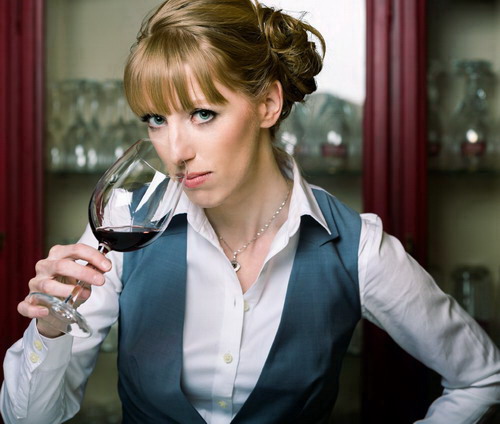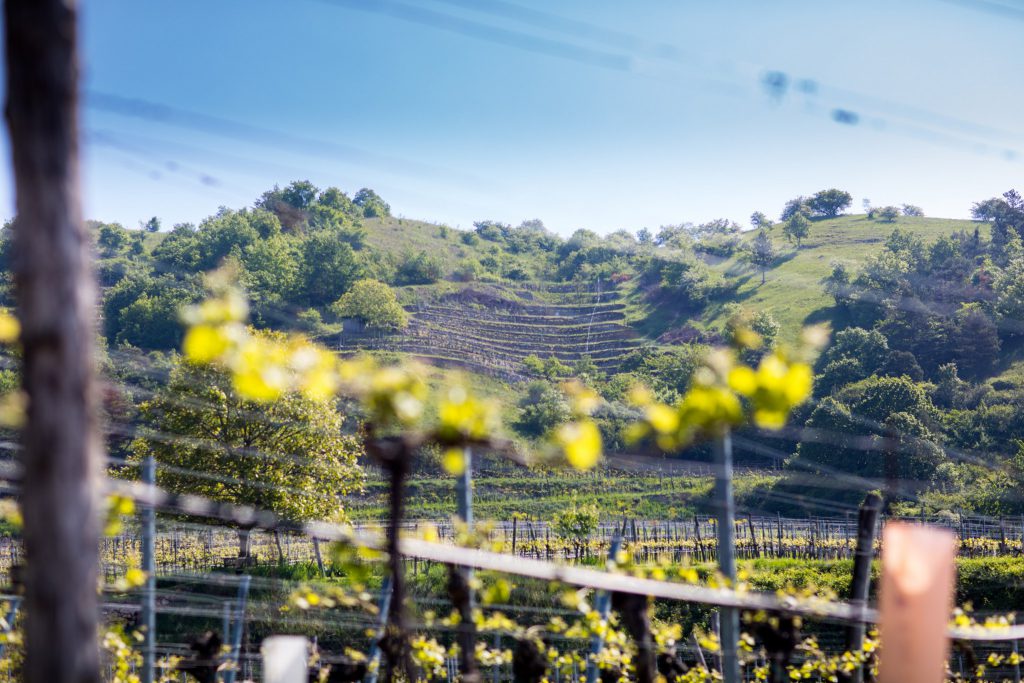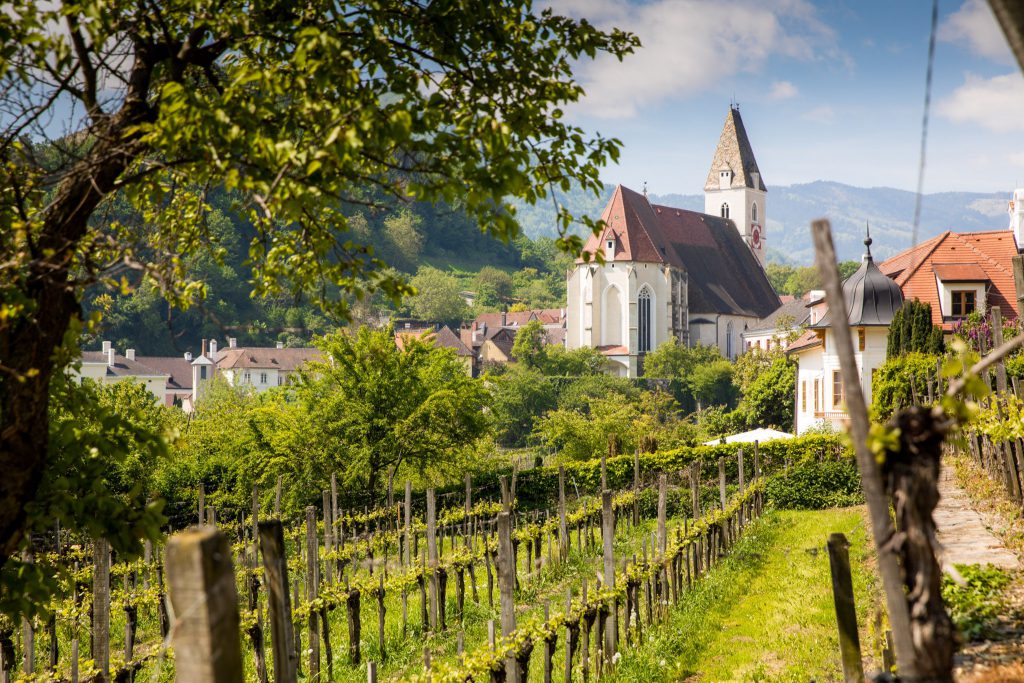By Rebecca Meïr-Liebman of Chef & Somm
One of the most wonderful aspects of wine is that it allows us to travel the world without leaving home.
From anywhere in the world, we can taste the terroir of Bordeaux, Sonoma, or the Mosel, especially when we successfully pair the cuisine of a particular region with its wine.
But can we truly grasp the complexity of a wine and its terroir without actually going there, without touching the land, breathing the air and getting to know the regions’ style, tradition, and philosophy?
At the risk of coming off as elitist, I say, dear wine lovers, start saving your pennies now and make that pilgrimage!
I’ve tried Austrian wines at tastings in Toronto, but it wasn’t until I went to the country, talked to the winemakers and immersed myself in Austrian culture, identity, tradition, art, music and the lifestyle, that I developed a deeper, richer, understanding of the wines.
As a professional sommelier, I enjoy certain privileges. Recently, I was invited to Austria by the Austrian Wine Marketing Board, and while there, had the great pleasure of visiting the beautiful Wachau wine region.
On the banks of the Danube, the people of Wachau revel in life’s simple pleasures: wine, food, nature, tradition, and connections with neighbours.
It’s a small, intimate, relaxed region where everyone knows everyone, connections are more human – you rarely see people talking or texting on their phones – and life here moves more slowly.
A small wine region, Wachau is located in a valley only 40 km in length, set between the towns of Melk and Krems, west of Vienna, in Lower Austria. And although the region is renowned among oenophiles for its outstanding whites, there are only 40,000 hectares under vine that produce a modest 3% of all Austrian wines.
Walking in the Wachau Valley, the connection between the colours of nature, the flow of the river, the freshness in the air, the authenticity of the people, and the aromas, flavours and appearance of this magical region’s wines was palpable. I felt such unique feelings in this place; words cannot do it justice.
The Vineyards and the People
Wachau vineyards are mostly located on steep hillsides along the Danube River. For more than a thousand years, the locals built and repaired dry stone wall terracing that made viticulture possible on these hillsides.
The term “drystone” refers to the building method; no mortar is used to hold the stones together, allowing water and air to pass though and wild flora and fauna to thrive between the stones.
Maintaining the terracing is labour-intensive and only professional stonemasons know how to compose and stack the stones to achieve the strength required. The vineyards of Wachau are too steep to introduce machines to the harvesting process; it’s all still done by hand.
Winemakers and grape-growers enjoy close relationships in Wachau. Roman Horvath, Managing Director of Domäne Wachau, related how the winemakers of Wachau visit their vintners and the vineyards frequently to get a sense of the health of the vines and to discuss the vineyards and vintage challenges with growers.
Unlike many other vineyards around the world who hire grape pickers at harvest time, at Wachau – since the yields are naturally low and there are so few vineyards – the winemakers, vintners and their families harvest the grapes themselves, and that leads to better sorting of grapes.
Grapes from highly-skilled pickers translates into higher quality wines, as there are close to no sub-optimal, under-ripe or over-ripe grapes harvested.
Identity in Every Bottle
Austria holds its food and wine traditions dear. The smallest change creates huge waves among the locals; whether it’s an adjustment to a treasured dish from a restaurant, or replacing the chef in charge.
Yet – and for this we are thankful – the Austrian wine industry has succeeded in celebrating tradition, indigenous grapes, and traditional viticultural practices, while at the same time, embracing innovation, creativity, setting higher safety standards, and tightening regulations.
Part of this forward thinking was the creation, in 1983, of The Vienna Wachau Nobilis Disrtrictus. Its mandate was to promote a unified identity of the Wachau region, rather than each winery developing its own separate identity.
At first, it was a challenge getting wineries on board – only 24 of a possible 235 wineries participated. But with time, the organization grew stronger and now there are an impressive 200 winery members.
Another aspect of the group’s mandate is to maintain and enhance the Wachau region’s wine quality by introducing strict regulations such as forbidding chaptalization (sweetening the wines); and thus submitting wines to a tasting panel prior to release for their stamp of quality and authenticity.
 Domäne Wachau tasting room
Domäne Wachau tasting room
Ethos and Aging Gracefully
The wineries of Wachau celebrate the natural flavour of the grape and its terroir. Unlike many New World wines where the focus can be on the winemaker’s craft, manipulation, additions and techniques, in Wachau it’s all about bringing out the best that’s already there in the grape.
However, it isn’t all hands-off. Without guiding the grapes and vines with pruning, and the yeast by controlling fermentation, the chances of producing a consistently excellent-quality product is low.
In keeping with this natural ethos, a strong taste of oak is not permitted in Wachau wines. Occasionally, wineries employ neutral oak barrels – barrels that have been in service for at least three years – to impart structure and a certain creaminess, without adding those classic vanilla and smoke notes associated with new oak. Also, winemakers will rarely practice malolactic fermentation to soften flavours.
Some of the best white wines in the world – mainly Grüner Veltliner and Riesling, but also Muscateller, Chardonnay, Sauvignon Blanc and Pinot Blanc – come from Wachau. Many of these wines are extremely age-worthy; assuming the wines are properly cellared, and from a good vintage, they can age for 30 years or more.

When the wine is young these wines tend to be very fruit-forward: orange peel, apricot, peach, grapefruit, with secondary notes of vanilla, caramel, yeast and butter. As the wine ages, the secondary notes become primary, replacing that expressive fruit with notes of yeast and butter.
Wachau winemakers believe it’s in the first bottle years that the grape expression shines the brightest. With age, the flavour of the grape fades, and a deeper terroir expression takes center stage.
Wachau Wine Styles
Unlike most of Austria’s other wine regions, Wachau does not employ the German classification system which is based on ripeness levels of the grape. Instead, it has chosen to create its own wine classification system, dividing the wines into three categories based on their natural alcohol content by volume, must weight, and aromatics.
Steinfer – this refers to an indigenous fragrant grass that grows around the vineyards of Wachau. Wines classified as Steinfer are the lightest of all three categories, with up to a maximum of 11.5% alcohol allowed. These wines are aromatic and lively with delicate, refreshing fruit flavours, and refreshing acidity.
Federspiel – A federspiel describes a traditional lure used in falconry. These wines can contain 11.5% – 12.5% alcohol and are fuller in body. Because of their delicate aromatic notes, and fairly low alcohol content, they are excellent with food.
Smaragd – Smaragd is the name of the little green lizards that inhabit the drystone terracing walls of the Wachau vineyards. Smaragd is the highest classification for Wachau wines, and must have a minimum of 12.5% alcohol. The grapes used to produce these rich and powerful, dry wines are picked late in the harvest, thus allowing them to develop fabulous flavour; these are the longest-lived Wachau wines.

Liebe, Liebe, Liebe; A few of the Wines I Fell in Love With
Prager, Ried Wachastum Bodenstein, Riesling, Smaraged, Wachau 2007
Högl, Ried Bruck, Muskateller, Smaraged, Wachau, 2016
Hick, Ried Buchenthal, Grüner Veltliner, Steinfeder, Wachau, 2016
Every Journey Starts with a Single … Sip!
You can read about a wine and a wine region; you can look at maps; you can even taste Wachau wines right from wherever you are in the world, but to really understand the complexity and natural wonder of these wines, I encourage you to put a trip to this spectacular wine region of rolling hills along the Danube on your (wine) bucket list!
Rebec ca Meir-Liebman
ca Meir-Liebman
Sommelier & Consultant
As co-owner of Chef & Somm, the GTA’s only Bespoke Private Dining and Sommelier service, Rebecca has acquired over a decade of experience in some of Canada’s – and the world’s – top dining rooms.
She earned her hospitality, service and sommelier skills at top restaurants – Canoe, Luma, BLÜ Ristorante and Maple Leafs Sport & Entertainment – but Rebecca is always learning, tasting, and cultivating relationships with winemakers, local and abroad.
Her thirst for wine knowledge is a never-ending quest; Rebecca brings an unquenchable curiosity and authority to any dining experience. www.ChefSomm.ca

















